Space News
Nasa
180
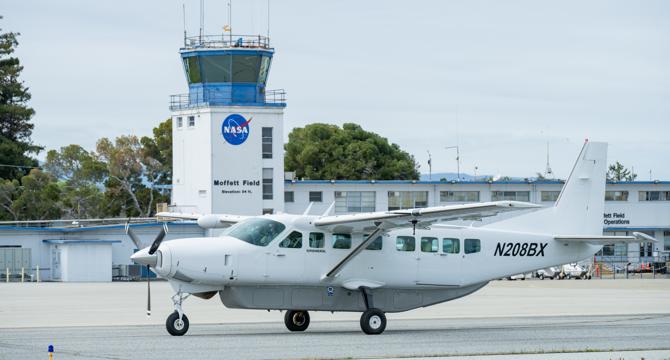
Image Credit: Nasa
NASA’s Moffett Federal Airfield Hosts Boeing Digital Taxi Tests
- Boeing tested new technology at NASA's Ames Research Center in California to improve commercial planes' taxi operations at airports.
- The technology aims to digitize taxiway information and automate aircraft taxi functions to enhance safety and efficiency.
- Boeing's digital taxi release system displays visual turn-by-turn routes on the pilot's digital tablet, reducing the need for verbal communication with air traffic control.
- NASA's collaboration with Boeing and other commercial partners seeks to automate specific functions in air traffic management to enhance safety and efficiency in airspace operations.
Read Full Article
10 Likes
TechCrunch
378
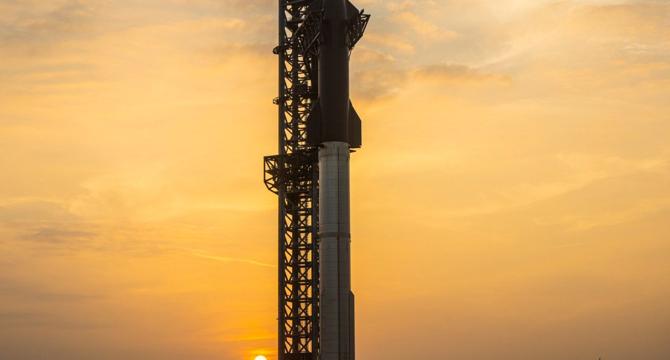
Image Credit: TechCrunch
SpaceX’s Starship cleared to return to flight with expanded ‘hazard areas’
- The Federal Aviation Administration has cleared SpaceX to perform the ninth test flight of its Starship rocket system, after back-to-back explosions earlier this year.
- The hazard areas for the upcoming test flight have been expanded based on an updated safety analysis provided by SpaceX.
- FAA's new hazard area covers around 1,600 nautical miles, double the size of the previous area, running eastward from Texas through the Bahamas and Turks & Caicos.
- SpaceX's ultimate goal with the Starship system is to send people to Mars, but for now, it will be used to launch more Starlink satellites and provide mission capability to NASA and the Department of Defense.
Read Full Article
22 Likes
Brighter Side of News
282

Image Credit: Brighter Side of News
Astronomers discover massive star-forming cloud near our solar system
- A massive hydrogen cloud named Eos has been discovered near our solar system, offering new insights into star and planet formation.
- Eos was detected through its ultraviolet glow, a departure from traditional carbon monoxide-based detection methods.
- The discovery challenges previous beliefs about the rarity and visibility of large molecular structures in space.
- Located about 300 light-years away, Eos is one of the largest known structures near Earth.
- Eos sits on the edge of the Local Bubble, a hot, empty area formed by multiple supernovae.
- The cloud is expected to vanish in about six million years, showcasing the transient nature of stellar environments.
- Eos is classified as a 'CO-dark' cloud, confirming the existence of undetected molecular hydrogen in our galaxy.
- The revolutionary technique used to discover Eos may lead to uncovering more hidden molecular clouds across the galaxy.
- The researchers' findings, published in Nature Astronomy, redefine approaches to observing molecular clouds.
- The discovery of Eos not only reshapes scientific views but also holds implications for future space missions and broader understanding of interstellar space.
Read Full Article
16 Likes
Nasa
223
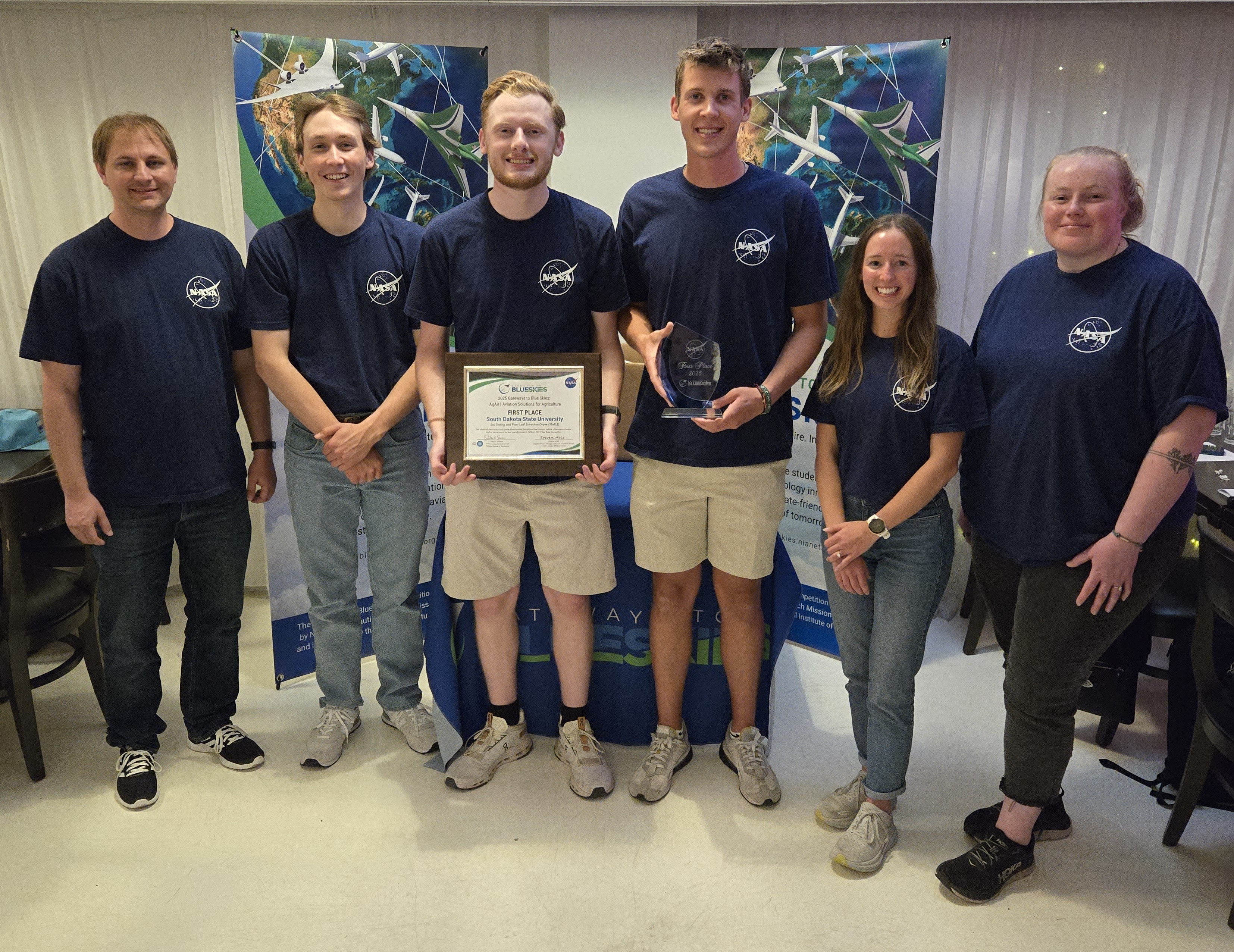
Image Credit: Nasa
Winners Announced in NASA’s 2025 Gateways to Blue Skies Competition
- A team from South Dakota State University won first place at the 2025 NASA Gateways to Blue Skies Competition with their project on drone-based soil and tissue sampling for U.S. agriculture.
- The competition challenged student teams to research new aviation solutions to support agriculture, with the winning team awarded internships at NASA aeronautics-focused centers.
- Other awards included University of Tulsa winning second place for CattleLog Cattle Management System and Boston University for Best Technical Paper on PLAANT.
- The competition, sponsored by NASA, aimed to enhance agriculture production, efficiency, sustainability, and resilience to extreme weather through innovative aviation solutions.
Read Full Article
13 Likes
Discover more
Knowridge
105
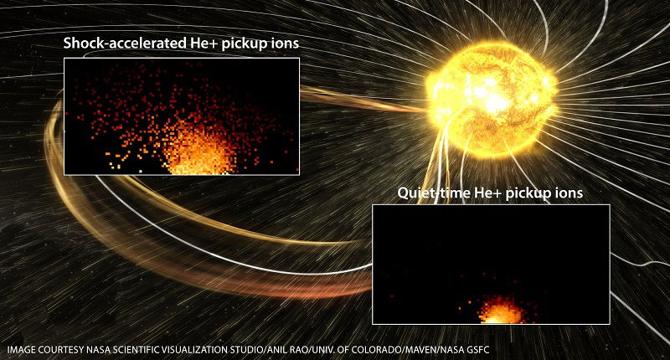
Image Credit: Knowridge
Scientists uncover how the Sun speeds up mysterious space particles
- Scientists at the Southwest Research Institute have discovered how the Sun influences helium pickup ions, a special type of space particle from outside our solar system.
- Solar activity, such as solar flares and coronal mass ejections, significantly impacts the speed and behavior of these helium pickup ions, which can travel up to twice as fast as the solar wind.
- By analyzing data from NASA's Solar TErrestrial RElations Observatory, researchers studied how these ions gain energy during solar events, especially their interactions with interplanetary shocks.
- Understanding the acceleration process of these pickup ions is crucial for predicting solar energetic particle events that can pose risks to astronauts, spacecraft, and technology on Earth.
Read Full Article
6 Likes
Eu-Startups
67

Female-founded British startup Atomik AM raises €713k to scale its advance manufacturing business
- Liverpool-based Atomik AM, a female-founded advanced manufacturing business, has secured a €713k investment from the Northern Powerhouse Investment Fund II to scale its solutions globally.
- The funding will enable Atomik AM to expand its team by 40% in Liverpool City Region, explore larger premises, and accelerate the delivery of sustainable manufacturing solutions.
- Founded by Professor Kate Black in 2022, Atomik AM focuses on sustainable materials and patented technologies to enhance advanced manufacturing efficiency.
- The company is developing innovative products like a Universal Binder for 3D metal printing and sustainable processes for upcycling aluminium waste into durable products.
Read Full Article
4 Likes
Livescience
345

Image Credit: Livescience
'Strange' star pulses detected in search for extraterrestrial intelligence
- An unusual pulse signal has been detected in the light of nearby stars, leaving scientists perplexed in their search for extraterrestrial intelligence.
- The signal showed rapid changes in brightness, hinting at possible obstructions in front of the stars, sparking theories including alien activity.
- Richard Stanton, a retired NASA scientist, identified quick identical pulses in the light of stars such as HD 89389 and HD 217014.
- Seth Shostak from SETI Institute cautioned against attributing the pulses to aliens, citing historical misinterpretations of natural phenomena as extraterrestrial events.
- The rapid and repetitive pulses suggest astrophysical origins rather than deliberate attempts at interstellar communication by aliens.
- Despite the mysterious nature of the light pulses from star HD 89389, traditional explanations like passing aircraft or satellites were ruled out.
- One possible solution proposed is the involvement of extraterrestrial intelligence near Earth due to the speed of brightness changes observed.
- Other potential causes for the pulses include gravitational waves and light diffraction off unseen space objects, highlighting the need for further data collection and analysis.
- The study emphasizes the necessity for additional observations to unravel the mystery, potentially through the use of ground telescope arrays.
- The search for extraterrestrial intelligence continues, with scientists exploring various phenomena that challenge traditional astronomical explanations.
Read Full Article
20 Likes
Nasa
332
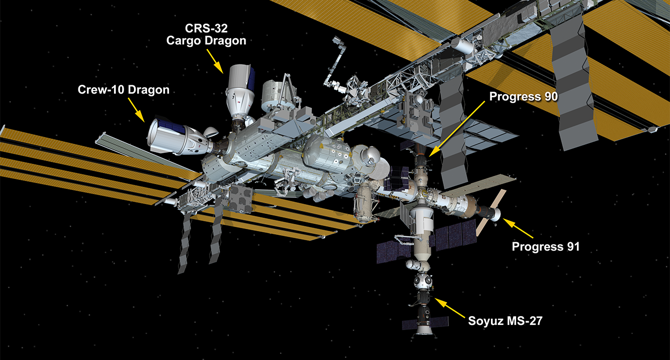
Image Credit: Nasa
NASA, SpaceX Stand Down 24 Hours for Dragon Undocking
- NASA and SpaceX are postponing the undocking of the Dragon spacecraft from the International Space Station due to unfavorable weather conditions off the coast of California.
- The decision was made to ensure safe splashdown operations for SpaceX's 32nd commercial resupply services mission for NASA.
- The next weather review is scheduled for 12 p.m. EDT, with a potential undocking opportunity on Friday, May 23.
- Updates on the undocking schedule will be provided by NASA as more information becomes available.
Read Full Article
20 Likes
Eu-Startups
328

Lithuanian SpaceTech startup Astrolight raises €2.8 million for laser communications platform
- Vilnius-based Astrolight raised €2.8 million in a Seed round for its laser-based communication platform connecting satellites to Earth.
- The funding was led by Balnord with participation from EIFO, Coinvest Capital, and existing investors 3NGLS and Rita Sakus.
- Astrolight aims to build an optical backbone network for space to address the increasing number of satellites and data transmission challenges.
- Founded in 2019, Astrolight focuses on optical connectivity solutions for space and defense applications.
- Their technology stack enables advanced optical communication terminals for various links in aerospace and defense.
- Astrolight is developing dual-use communication architecture for space-to-space and space-to-ground optical links.
- The company plans to deploy an operational optical ground station and demonstrate a hybrid space-to-ground and space-to-space optical terminal.
- Astrolight's platform offers high-speed, jam-resistant solutions to address the growing satellite market's data bottleneck.
- Lasercom is positioned as a competitive option with faster data rates compared to radio frequencies for space-to-ground connectivity.
- Astrolight's goal is to become a global leader in laser communication technologies and revolutionize secure data transmission in space.
Read Full Article
19 Likes
TechCrunch
307

Image Credit: TechCrunch
4 days left: Up to $900 off your ticket and 90% off for your +1 at TechCrunch Disrupt 2025
- Only 4 days left to save up to $900 on TechCrunch Disrupt 2025 ticket with an additional 90% off for your +1. The event will take place from October 27–29 in San Francisco.
- TechCrunch Disrupt is celebrating its 20th anniversary and will feature 10,000 tech, startup, and VC leaders discussing AI breakthroughs, tech innovation, and startup launches.
- The event will host renowned speakers including Adam Bain, Astro Teller, Sangeen Zeb, and more. It offers interactive sessions, Startup Battlefield competition, demos, and networking opportunities.
- Early Bird pricing saving up to $900 on tickets is available until May 25 at 11:59 p.m. PT. Attendees can secure their spots now to be part of this innovative experience.
Read Full Article
18 Likes
Earthsky
143
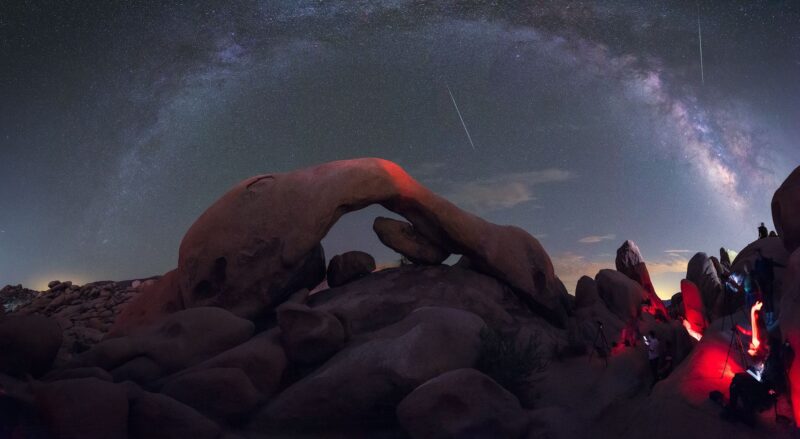
Image Credit: Earthsky
Stargazing in national parks around the world
- Stargazing in national parks provides a great opportunity to experience the glory of the night sky away from light pollution in urban areas.
- National parks in the U.S. and over 100 countries globally offer some of the darkest skies for stargazing.
- Resources like International Dark Sky Places, EarthSky’s Best Places to Stargaze, and Lonely Planet's book provide information on prime stargazing spots.
- Summer nights are ideal for stargazing, especially around the new moon when the sky is darkest.
- National parks offer stargazing programs led by knowledgeable park rangers and observatories for enhanced experiences.
- The National Park Service (NPS) works towards protecting dark skies and maintaining the night sky's natural beauty.
- Many U.S. national parks are designated International Dark Sky Parks due to their exceptional dark skies.
- Stunning night sky photos from national parks around the world showcase the beauty and wonder of stargazing in these natural settings.
- To preserve the sanctity of the night sky and enjoy stargazing, visiting national parks is a fulfilling and enriching experience.
- Stargazing in national parks offers a unique way to connect with nature and marvel at the cosmic wonders above.
Read Full Article
8 Likes
Earthsky
88

Image Credit: Earthsky
New minor planet found in the distant solar system
- On May 21, 2025, a new minor planet named 2017 OF201 was added to the list by the International Astronomical Union's Minor Planet Center.
- 2017 OF201 is one of the largest solar system objects discovered in the past decade with a diameter estimated between 290 and 510 miles.
- It orbits the sun at a distance ranging from 45 to 838 astronomical units and is classified as a trans-Neptunian object, possibly an extreme one due to its distance.
- Despite its size, 2017 OF201 is not a candidate for Planet 9, as it does not meet the mass requirements to explain the gravitational clustering in the distant solar system.
Read Full Article
5 Likes
TechnologyReview
379

Image Credit: TechnologyReview
A new atomic clock in space could help us measure elevations on Earth
- Due to different zero points for elevation, a bridge across the Rhine River experienced a 54-centimeter misalignment between German and Swiss sides.
- To standardize elevation measurement globally, the International Height Reference Frame (IHRF) was adopted in 2015.
- The most accurate clock in space, the Atomic Clock Ensemble in Space (ACES), was launched to enhance precision.
- ACES, consisting of cesium and hydrogen atomic clocks, offers unparalleled precision and stability.
- Geodesists can use ACES to perform tests of fundamental physics and make more precise gravitational measurements.
- A synchronized clock network from space will aid in establishing a more accurate zero point for elevation measurements worldwide.
- The current geoid model lacks precision, particularly in Africa and South America, due to limited surveys.
- Proposed worldwide clock network aims to map Earth's gravitational field more accurately, leading to a more precise geoid model.
- Improving the geoid's precision can aid in infrastructure projects and resolving disputes, like the Mount Everest height discrepancy.
- Development of the clock network is a lengthy process requiring dedicated efforts from scientists and engineers.
Read Full Article
22 Likes
TechSpark
122

Beyond Earth’s Atmosphere: The Met Office’s Expanding Role In Space Weather and Technology
- The Met Office's Space Weather Operations Centre (MOSWOC) forecasts space weather events and their impacts on Earth's infrastructure.
- An independent report suggests that the Met Office's space weather capability will be worth over £600 million to the UK in the next decade.
- The Met Office uses advanced technology like AI and supercomputers for weather forecasting, with projects in place to enhance international forecast accuracy.
- The Met Office's technology teams work on cutting-edge developments and have been recognized as one of the 'Best Workplaces in Tech', offering exciting opportunities for experts in various roles.
Read Full Article
7 Likes
Eu-Startups
333

Amsterdam-based VC firm Keen Venture Partners secures EIF backing for €40 million defence tech fund
- Dutch VC firm Keen Venture Partners receives a €40 million investment commitment from the European Investment Fund (EIF) for its European Defence and Security Tech Fund.
- This investment aims to enhance Europe's defence innovation ecosystem in the wake of increasing global tensions and the rising importance of technological sovereignty.
- Keen Venture Partners focuses on DeepTech ventures and collaborates with tech entrepreneurs to drive innovation in sectors like cybersecurity, AI, robotics, and space technology.
- The investment will support early-stage startups across Europe, particularly in satellite communication protection, space asset defense, and satellite imagery analysis, contributing to modernizing and securing Europe's defense capabilities.
Read Full Article
20 Likes
For uninterrupted reading, download the app